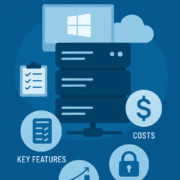Link-Building Outreach 101: A Beginner’s Guide [2023]
Link-building outreach is essential if you want to succeed in today’s digital world. In fact, research shows that 91% of all pages on the internet get little to no organic traffic, due to the fact that they have zero backlinks leading to their content! Imagine what their business could do if they had any backlinks at all.
In this article, you will learn:
- The full definition and background of link-building.
- The different types of link-building strategies and tools you can use.
- Ten expert tips that can help maximize results.
So if you’re ready to take your business to the next level, keep reading for a comprehensive guide on link-building outreach and some top tips from experts in the industry.
Let’s get started!
What Is Link-Building?
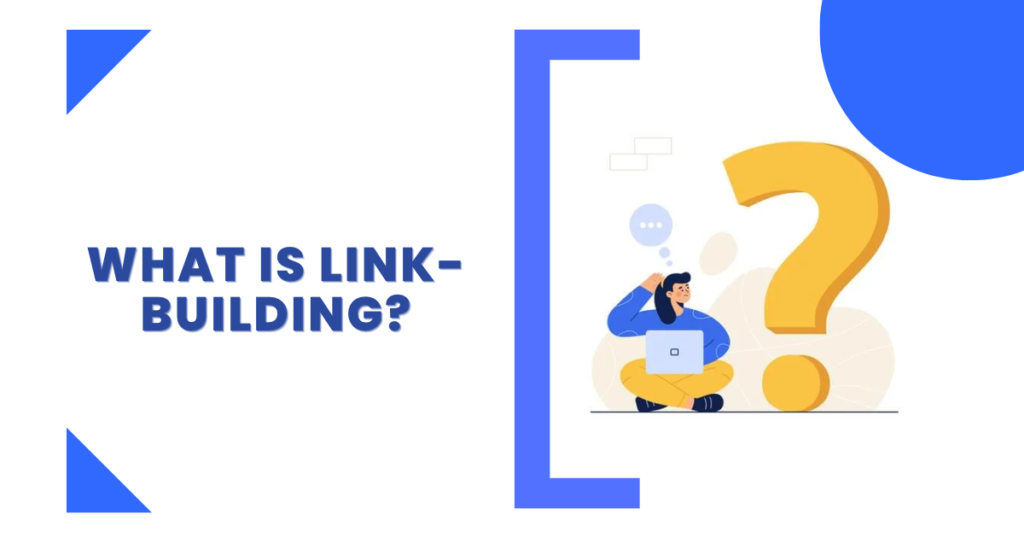
Link-building is a vital part of digital marketing that involves creating and obtaining quality inbound links, which is a link coming from another website to your own website, from relevant sources.
It’s an effective way to increase a website’s visibility and boost its ranking on search engine results pages, which are the pages that a search engine produces after a user has submitted a search query.
Link-building involves developing relationships with other websites and exchanging links that users can click on to reach specific pages. With link-building, sites can quickly gain visibility and tap into new networks which would have taken months or longer to build organically.
Furthermore, link-building allows websites to rank higher on search engines, which increases their reach exponentially. While link-building takes time and effort, its value as a marketing tool remains undeniable and more companies are embracing this technique every day.
But why does link-building boost SEO? The answer is simple: Google sees high-quality backlinks as a vote of credibility, so Google pushes it higher in the search engine results page (SERP).
The key is to build relevant and high-quality links, meaning they come from credible websites related to your industry and provide valuable content for users.
If done correctly, link-building can help drive more organic traffic to your website and improve its standing in SERPs.
What Are The Different Types Of Link-Building?
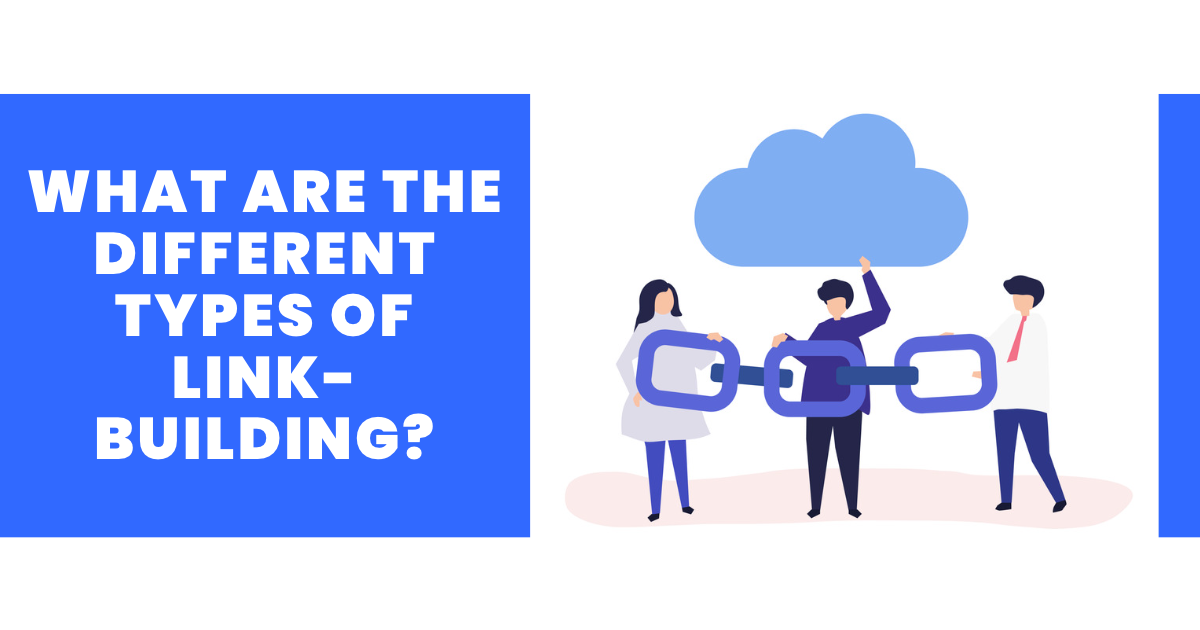
There are several types of link-building strategies that can be employed depending on the goals and objectives of a particular campaign. These include link-building through content creation, link exchange programs, social media link-building efforts, and more.
Each type has its own advantages and disadvantages, which should be carefully considered when designing a link-building strategy.
Organic Link Building
Organic link-building involves creating interesting and valuable content for readers with the goal of obtaining natural, organic links. This typically requires writing high-quality blog posts, articles, or other forms of content that link back to a website.
Organic link-building takes time and effort but yields a higher quality of link over the long haul. It also has the added benefit of increasing brand awareness as more people become familiar with your company’s name or product through the content you create.
Outreach/Manual Link Building
Outreach link-building refers to manually reaching out to other websites and asking for a link. This could involve talking to web admins, bloggers, or influencers in the same industry as your business and offering them something of value – such as a blog post – in exchange for a link.
Outreach link-building is more time-consuming than organic link-building but can be a valuable way to generate quality links that may not have been accessible through organic link building methods.
Guest Posting Link Building
Guest posting link-building involves writing blog posts or articles on someone else’s website in exchange for a link to your website. This type of link-building is usually used when you want to target websites with higher authority than yours and leverage their link power to increase the ranking of your own website.
The key to successful guest posting link-building is writing high-quality content that engages readers and encourages them to take action after visiting the post.
Content Marketing & Promotion Link Building
Content marketing link-building involves creating content such as blog posts, videos, podcasts, or infographics and promoting it on social media channels using social media scheduler. This type of link-building helps increase website visibility and can help attract more people to a website who may link to the content they find interesting.
Content promotion link-building should be combined with other link-building methods for maximum effect.
Broken Links Reclamation Link Building
Broken link reclamation link-building involves finding websites with broken links and offering to replace them with a link back to your website. This type of link-building requires a bit of research as you have to locate the broken link, find out who owns it and then offer your link in its place.
It can be time-consuming, but it’s an effective way to obtain high-quality links that may not have been accessible through other link-building tactics.
Competitor Analysis & Replication Link Building
Competitor analysis link-building involves researching your competitors’ link-building strategies and replicating them. This type of link-building requires a thorough investigation into what other websites are doing in terms of link-building, so you can better understand their link-building tactics and then use that knowledge to replicate similar efforts on your own website.
However, it is essential to note that this should not be done blindly – a comprehensive competitor link analysis should be conducted before any link-building activities are undertaken to ensure all the obtained links comply with SEO best practices.
Directory Listings, Forum Signatures & Blog Commenting Link Buildings
Directory listings link-building involves submitting your website to relevant directories to obtain a link back from them. This type of link-building can be time-consuming but is an effective way to increase the number of link sources pointing back to your website.
Forum signatures and blog commenting link-building involve leaving comments or signature links on relevant forums and blogs in exchange for a link back to your own website. This tactic should be used cautiously as it can lead to link spam if not done correctly.
Resource Page Link Building
Resource page link-building involves creating or finding valuable resources that can be used by those in the same industry as your business and offered to a website owner in exchange for link placement. This tactic requires research but is an effective way to obtain high-quality links from authoritative websites.
Infographic & Video Embeddable Widgets Link Building
Infographic link-building involves creating an infographic and offering it to a website owner in exchange for link placement. This type of link-building is effective as it encourages engagement from the audience and can be used to increase website visibility.
Video embeddable widgets link-building is similar to infographic link-building, but instead of an infographic, you create a short video that can be embedded on other websites with a link back to your website. This type of link-building requires creativity but can yield high-quality links due to the interactive nature of videos.
Local Citations & Directory Submissions Link Building
Local citations link-building involves submitting your business details to local directories and search engines to gain visibility in those areas. This type of link building can be effective for businesses with a physical presence, as the link back from such websites can help increase website rankings in search engine results pages.
Directory submissions link-building involves submitting your website to relevant online directories in exchange for link placement. This type of link-building is ideal for websites targeting a specific niche or geographical area, as it helps build credibility with potential customers and increases overall website visibility.
Paid & Sponsored Links Link Building
Paid link-building involves paying other websites to link to your website. This type of link building can be risky as it can result in penalties from search engines if done incorrectly. Before investing in this tactic, it is vital to ensure that all paid links adhere to SEO best practices, such as link quality and relevance.
Sponsored link-building involves offering a website owner monetary compensation or free products/services in exchange for link placement on their website. This type of link building should also be used with caution, as it may result in penalties from search engines if not done correctly.
What Are The Benefits Of A Link-Building Outreach?
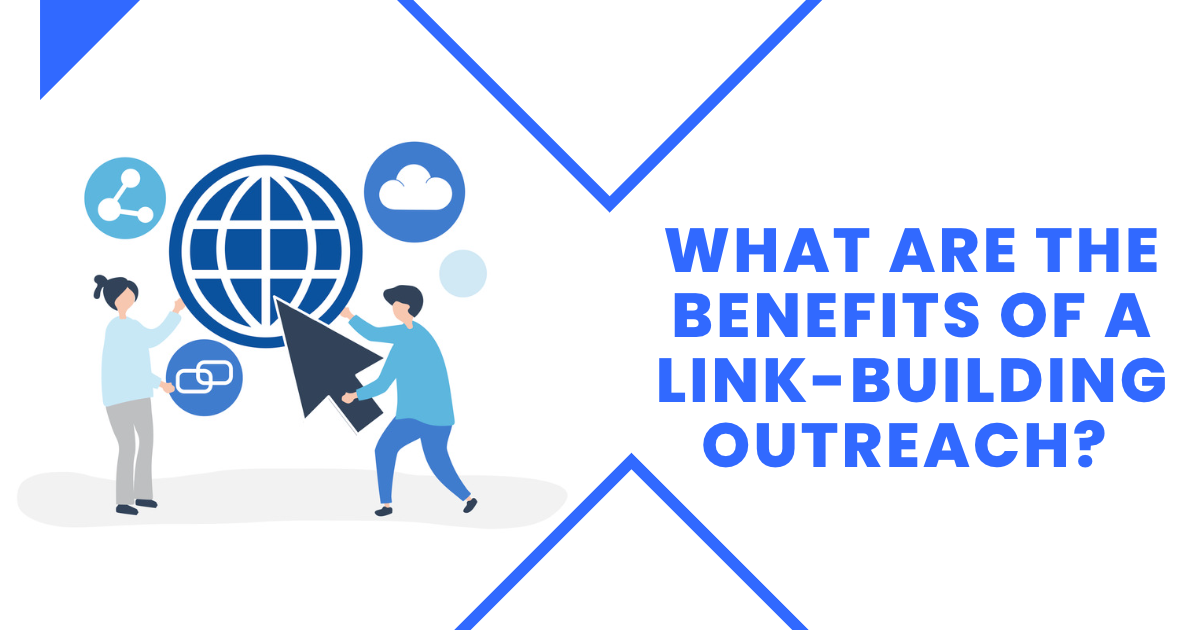
Improves website visibility and traffic
Link-building outreach can be a potent tool in helping to increase website visibility and traffic. Not only does link-building help to increase the number of link sources pointing back to a website, but it also helps to create a higher-quality link profile that is more likely to be seen favorably by search engines.
When strategically pursuing link-building opportunities, websites can increase their online visibility and gain significant organic web traffic. Increased web visibility means increased exposure to an organization’s products and services, which can lead to an overall boost in sales and revenue.
An example of improved website visibility and traffic through link-building outreach could involve a website owner reaching out to another website in the same industry and offering an infographic or video link exchange. By providing a link back to their own website, the link-building tactic would increase visibility for both websites and bring more organic web traffic.
For instance, a link-building for SaaS process would involve researching the target website, creating or identifying a valuable resource (such as an infographic or video) that resonates with its audience and then crafting an outreach message that offers link placement in exchange for the resource.
This link-building strategy would benefit both websites as it encourages user engagement from viewers who click on the link to learn more about the resource, leading them back to both sites.
Helps build relationships with other websites and influencers
Engaging in link-building outreach can also help to build relationships with other websites and influencers within the same industry. By connecting with other websites through link-building tactics, organizations can establish valuable partnerships that could lead to further link exchanges or collaborations in the future.
These relationships can benefit both parties involved, as it helps increase organic web traffic for all of the websites involved and encourages cross-promotion between platforms.
However, it is essential to remember that link-building should be used more than just for link exchange purposes; instead, link-building should be seen as an opportunity to create genuine connections with like-minded individuals or businesses interested in similar topics or services.
Increases brand awareness and recognition
Link-building outreach can also be used as an affordable branding solution to increase brand awareness and recognition. Organizations can expand their reach and introduce their services or products to a broader audience by creating link opportunities with other reputable websites.
This link-building tactic helps create a ripple effect; viewers will be exposed to the organization’s products or services as they click on the link, which could lead to future sales. Additionally, link-building may help organizations gain recognition from notable industry influencers who may link to them if they appreciate their content quality or services.
Establishes authority and trustworthiness within the industry
Lastly, link-building outreach is a great way for organizations to establish authority and trustworthiness within their industry. By providing linkable resources such as infographics, eBooks, or videos that relate to the same topics being discussed by other websites and influencers in the same space, an organization can prove that they are knowledgeable about their field and demonstrate their expertise.
This link-building tactic could also help organizations build relationships with other stakeholders in their industry, which would help elevate their reputation among peers.
How To Do It Step-By-Step
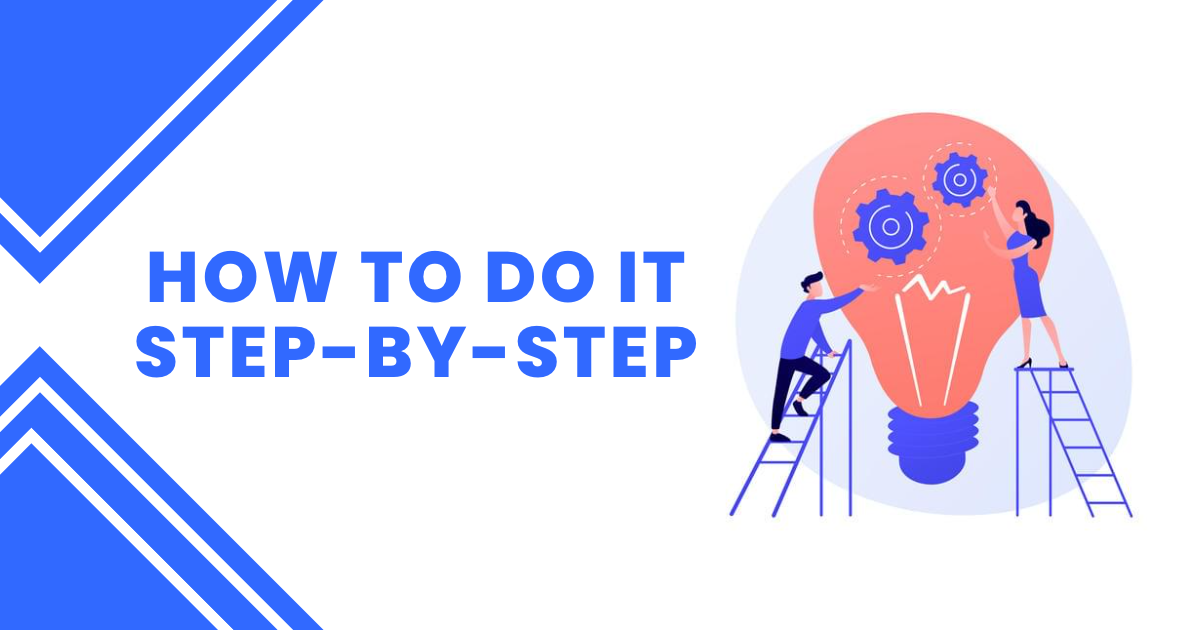
So now you know how crucial it is to have a link-building outreach for your website. Let’s discuss all the necessary steps to reach out to others effectively.
Preparing for Your Link-Building Outreach
Setting Objectives and Goals
Before you begin link-building, setting objectives and goals based on your desired outcomes is crucial. Having clear-cut objectives will help keep link-building efforts organized and focused on the end result.
Establishing Criteria for Prospective Links
Once objectives and goals are set, you can establish criteria for prospective link partners. This helps ensure that link-building efforts remain focused on quality link resources, not link farms or spammy websites.
Identifying Appropriate Target Websites
The next step is to identify appropriate target websites for link-building outreach. This could include researching relevant websites, directories, and industry influencers that may have linkable resources related to the same topics as your website.
Researching Your Prospects in Detail
Once the link prospects have been identified, it’s essential to research each option in detail. This includes analyzing their link resources, content quality, website authority, and link sources.
Creating Engaging Content for Outreach Purposes
Once link prospects have been thoroughly researched, the next step is to create engaging content for outreach purposes. This could include linkable resources such as infographics, eBooks, videos, or blog posts that link to your website.
Developing an Effective Contact List
Lastly, the link-building outreach effort should begin with developing an effective contact list. This could include collecting email addresses for link prospects, link partners, or industry influencers.
Executing Your Link-Building Outreach Campaign
Crafting Personalized Messages that Match the Needs of Each Recipient
Once the contact list has been established, link-building outreach efforts can begin. It’s crucial to craft personalized messages that match the needs of each link prospect or link partner. As you explore more on how to create an email, you will find out about the great influence of personalization on your overall campaign success.
Understanding What to Include in Initial Messages And What to Leave Out
When crafting messages, you understand what information needs to be included in initial messages and what should be left out. This includes link details such as anchor text, link destinations, link placement, and context.
Following Up on Outreach Messages and Keeping Track of Responses
It’s also necessary to follow up on link-building outreach messages and keep track of responses. This helps ensure that link partners are contacted promptly, and link requests are not forgotten.
Tracking and Analyzing Link-Building Outreach Results
Finally, link-building outreach efforts should be tracked and analyzed to measure performance. This could include monitoring link clicks, visits, conversions, etc.
The Top 9 Free Tools You Can Use

Link-building research involves various steps, from setting objectives and goals to identifying appropriate link prospects and creating engaging content for outreach. To make link-building outreach more efficient and effective, here are several free online tools that can help simplify the process.
1. FindThatLead – A Tool For Finding Emails
FindThatLead is a link-building tool that helps link builders identify potential link partners. This link-building tool helps link builders quickly find emails of relevant link prospects and reach out to them in an automated fashion.
Features:
- Email Finder – FindThatLead allows link builders to quickly search for the emails of potential link partners, eliminating the need for manual research.
- Automated Outreach – This tool also makes it easy for link builders to send automated outreach messages to their link prospects, helping to accelerate their link-building efforts.
Advantages:
- Increased Efficiency – With FindThatLead, link builders can efficiently build links by automating the process of finding and reaching out to potential link partners.
- Enhanced Visibility – link builders can also gain valuable insights into their link-building campaigns by analyzing the performance of link prospects with FindThatLead’s built-in metrics.
Benefits:
- Time Savings – This tool helps link builders save time by eliminating the need for manual research when it comes to finding link prospects.
- Improved Performance – link builders can quickly identify link partners that are most likely to provide them with the highest ROI.
2. Buzzstream – A Tool For Managing Link-Building Outreach
Buzzstream is a link-building outreach tool that helps link builders manage their link-building campaigns more efficiently. It has several features to help link builders simplify the process of link building, such as:
Features:
- Automated Email Tracking – Monitor when emails are opened and clicked on so you can follow up with prospects in real time.
- Link Building Outreach Templates – Create custom templates for your link-building outreach efforts that include personalized messages tailored to each prospect’s needs.
- Advanced Filtering Options – Filter through contact lists based on criteria such as industry, region, or job title. This makes it easier to find the right contacts for your link-building efforts.
Advantages:
- Streamline Your Workflow – Buzzstream automates tedious tasks like email tracking and filtering, allowing you to focus on what matters most – creating relationships with potential link partners.
Benefits:
- Improve Efficiency – With Buzzstream’s automated tools and advanced filtering options, you can quickly identify the best contacts for your link-building outreach efforts without wasting time searching through irrelevant data points.
- Increase ROI – By targeting only relevant contacts interested in partnering with you, you can maximize the ROI for link-building outreach efforts.
3. Pitchbox – A Tool For Automating Outreach Messages
Pitchbox is an automated link-building outreach tool that helps link builders reach out to potential link partners more efficiently. It has several features designed to improve link-building outreach, such as automation of link-building messages, custom templates for link-building outreach, and advanced filtering options.
Features:
- Automated Messages – Pitchbox lets you create automated messages to link prospects regularly. This helps link builders stay in contact with their link prospects without having to reach out manually every time.
- Custom Templates – With Pitchbox, you can create custom link-building outreach templates that include personalized content tailored to each prospect’s needs. You can also reuse your best templates, so you don’t have to start from scratch for each campaign.
- Advanced Filtering Options – You can filter through contact lists based on criteria such as industry, region, or job title, allowing you to find the right contacts for your link-building efforts quickly.
Advantages:
- Streamline Your Workflow – Pitchbox automates tedious tasks like creating and sending out automated messages and filtering through contact lists, making it easier and faster to identify the right contacts for link-building outreach efforts.
- Increase ROI – By targeting only relevant contacts, you can maximize the effectiveness of your link-building campaigns and increase ROI.
Benefits:
- Improved Efficiency – With Pitchbox’s automated features and advanced filtering capabilities, link builders can easily sort through potential link prospects to quickly identify the best ones for their campaigns. This improved efficiency leads to better performance in terms of time spent on the task and results achieved from it.
- Time Savings – The automation tools in Pitchbox help save time by reducing manual work related to creating and sending messages and sorting through contact lists for relevant prospects. This allows link builders more time to focus on other aspects of their campaigns or strategize for future initiatives.
- Increased Reach – Through using a comprehensive database of contacts combined with powerful filtering options, Pitchbox enables users to easily extend their reach beyond just those they are familiar with or have access to directly, exposing them to a larger pool of potential partners than they could reach via manual methods alone.
4. Hunter.io – A Tool To Verify Email Addresses
Hunter.io is another excellent tool for link-building outreach efforts. It helps link builders quickly and accurately verify email addresses, ensuring their link-building messages are sent to the right people.
Features:
- Bulk Email Verification – Hunter.io can quickly go through large lists of emails and verify each one in just a few seconds, helping link builders save time when verifying contact information.
- Advanced Filtering Options – You can also filter contacts by criteria such as location or domain to ensure you’re targeting only relevant contacts. This makes it easy to find the correct link prospects for your link-building campaigns.
- Automation Tools – Hunter.io offers automation tools to help link builders send out link-building messages at regular intervals without manually creating and sending each one.
Advantages:
- Improved Accuracy – By verifying email addresses, link builders can ensure they’re targeting the right contacts and not wasting time on invalid ones. This helps link builders get more out of their link-building efforts.
- Time Savings – The automation tools in Hunter.io help link builders save time by quickly verifying emails and sending out link-building messages without having to create them manually each time.
Benefits:
- Increased Reach – Through using a comprehensive database of verified contact information combined with powerful filtering options, Hunter.io enables users to easily extend their reach beyond just those they are familiar with or have access to directly, exposing them to a larger pool of potential partners than they could reach via manual methods alone.
- Improved Efficiency – By having accurate contact info and verified emails, link builders can quickly identify the right contacts for their link-building campaigns leading to better performance in terms of time spent on the task and results.
- Time Savings – The automation tools in Hunter.io help save time by reducing manual work related to verifying emails and creating link-building messages, allowing link builders more time to focus on other aspects of their campaigns or strategize for future initiatives.
5. Google Alerts – A Tool For Monitoring Link-Building Outreach Results
Google Alerts is an influential tool link builders can use to monitor link-building outreach results. With this tool, link builders can set up notifications to be sent via email when their link-building campaigns are mentioned on the web. This helps link builders know when and where their link-building efforts have been successful.
Features:
- Customizable Alerts – Link builders can customize Google Alerts for specific topics or websites, allowing them to keep track of any changes related to their link-building campaigns.
- Comprehensive Database of Sources – Google Alerts include a comprehensive database of sources from all over the web, such as news sites, blogs, forums, and more. This makes it easy to determine if your link-building campaigns are being mentioned in relevant places.
Advantages:
- Monitor link-building efforts – Link builders can use Google Alerts to quickly and easily monitor link-building outreach results, allowing them to make adjustments for improved performance.
- Increased Visibility – Monitoring link-building campaigns with Google Alerts helps link builders stay on top of any changes related to their link-building efforts, ensuring that they’re always aware of new opportunities and threats.
Benefits:
- Increased Reach – By setting up customized alerts link builders can ensure that they are notified whenever their link-building campaigns are mentioned, helping them extend their reach beyond just those they have contacted directly.
- Improved Performance – With the help of Google Alerts, link builders can better understand how their link-building campaigns are performing and adjust them accordingly for improved results.
- Time Savings – Lastly, link builders can save time by setting up alerts to receive notifications instead of manually checking for link-building outreach results on the web.
6. Linkstant – A Tool For Keeping Track of link Building Outreach Results
Linkstant can be used to keep track of link-building outreach results. This link-building tool helps link builders minimize their manual effort by providing notifications when their link-building efforts are mentioned anywhere on the web.
Features:
- Comprehensive Database of Sources – Linkstant includes a comprehensive database of sources from all over the web such as news sites, blogs, forums, and more. This makes it easy to determine if your link-building campaigns are being mentioned in relevant places.
- Customizable Notifications – Linkstant also allows link builders to set up customizable email alerts, so they’re notified anytime their link-building efforts are mentioned online.
Advantages:
- Monitor link Building Campaigns – link builders can monitor their link-building campaigns and quickly assess their performance.
- Improved Visibility – link builders can gain better visibility into their link-building efforts and make informed decisions about which links will yield the best results.
Benefits:
- Increased Reach – With Linkstant, link builders can easily extend their link-building reach beyond those they have contacted directly.
- Time Savings – This tool also helps link builders by eliminating the need for manual research on tracking the results of link-building outreach.
7. Mention – A Tool For Monitoring Link Building Efforts
Mention is a link-building tool that can be used to monitor link-building efforts. This tool helps link builders track mentions of their link-building campaigns across various social media platforms and websites.
Features:
- Social Media Monitoring – Mention allows link builders to monitor mentions of their link-building campaigns on various social media platforms such as Twitter, Facebook, and LinkedIn.
- Cross-Platform Tracking – Mention also allows link builders to track their link-building efforts across multiple web sources such as blogs, forums, etc.
Advantages:
- Increased Reach – With Mention, link builders can extend their link-building outreach beyond those they have contacted directly by monitoring mentions of their link-building campaigns on various social media platforms and websites.
- Improved Visibility – link builders can also gain better visibility into their link-building efforts and make informed decisions about which links will yield the best results.
Benefits:
- Time Savings – Mention helps save time by removing the need for manual research to track outreach results.
- Improved Performance – This tool also provides link builders with metrics such as Reach, Engagement, and Exposure that can help them identify link prospects most likely to deliver the best results.
8. Rmoov – A Tool For Removing Unwanted Links
Rmoov helps link builders remove unwanted links from their link-building campaigns. This link-building tool helps to maintain the quality of builders’ link profiles by identifying and eliminating negative inbound links that could potentially harm their SEO efforts.
Features:
- Easy Link Revocation – Rmoov makes it easy for link builders to revoke incoming links without manually contacting web admins or search engines.
- Bad Link Identification – This link-building tool also features an algorithm that is designed to identify bad inbound links quickly and accurately.
Advantages:
- Improved Quality – By using Rmoov, link builders can ensure that their link profiles remain free from any malicious or irrelevant inbound links.
- Enhanced Performance – link builders can also gain better visibility into their link-building efforts and make informed decisions about which links will yield the best results.
Benefits:
- Increased Visibility – With Rmoov, link builders can quickly identify link prospects that are most likely to provide them with the highest ROI.
- Time Savings – This link-building tool helps link builders save time by eliminating the need for manual research regarding identifying and removing unwanted inbound links.
9. ReplyCo – A Tool For Automating Link-Building Outreach
ReplyCo helps to automate builders’ link-building outreach campaigns. This tool helps to quickly and easily reach out to potential link partners while ensuring that all link requests are sent on time.
Features:
- Email Automation – ReplyCo allows link builders to quickly send link requests without having to type out every single email message manually.
- Campaign Management – This tool also features an intuitive dashboard that makes it easy for link builders to manage their link-building campaigns from one central location.
Advantages:
- Increased Efficiency – With ReplyCo, link builders are able to build links through the automation of contacting potential partners.
- Improved Performance – link builders can also save a lot of time by automating link-building outreach efforts and measuring the performance of link-building campaigns with ReplyCo’s built-in metrics.
- Enhanced Visibility – This link-building tool provides link builders with real-time insights into their link-building campaigns, allowing them to identify link prospects that are most likely to deliver the best results.
Benefits:
- Time Savings – This link-building tool eliminates the need for manual research regarding managing link-building campaigns, giving link builders more time to focus on other aspects of their link-building strategy.
Frequently Asked Questions (FAQs)
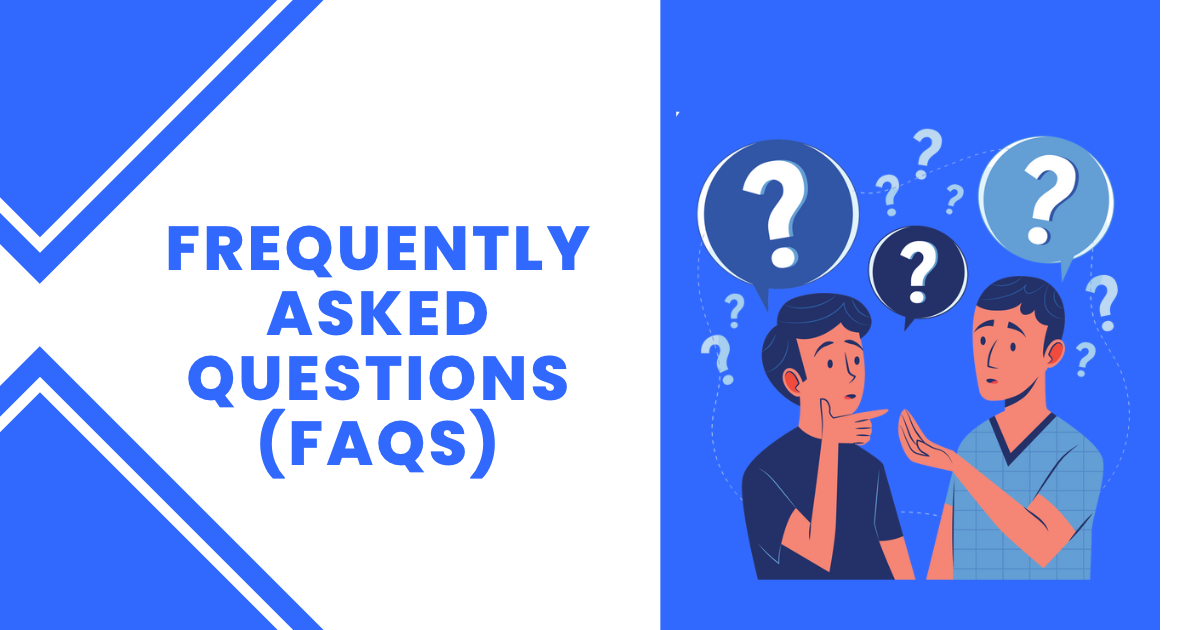
How Long Does it Take to See Results from Link-Building Outreach?
The time it takes to see results from link-building outreach depends on link quality, link relevancy, link authority, and link popularity. Generally, link builders should expect to wait a few weeks before seeing any noticeable changes in their website rankings.
How Do I Know if My Links are Being Built Successfully?
Link builders can track link-building steps using link-tracking tools or link analysis software. These tools enable link builders to analyze link performance, identify successful link prospects, and uncover link opportunities.
What’s the Difference Between White Hat and Black Hat Link-Building?
White hat link-building strategies are link-building strategies that abide by search engine guidelines and focus on link quality. White hat link-building techniques include guest posting, link reclamation, broken link-building, etc. Black hat link-building tactics involve using automated tools to generate low-quality links to manipulate search engine rankings quickly. Black hat link building is considered unethical and may lead to being penalized by search engines.
Conclusion
Now, let’s recap our takeaways:
- Link-building outreach is a great way to increase visibility and website rankings. Link builders should use link-tracking tools and link analysis software to measure the performance of link-building campaigns, track link-building efforts, and identify link prospects that have delivered the best results.
- Link-building outreach campaigns should prioritize link quality over link quantity. Content such as infographics, videos, case studies, blog posts, and eBooks are excellent link-building content pieces link builders can use in their link-building outreach efforts.
- White hat link-building strategies abide by search engine guidelines and focus on link quality. In contrast, black hat link-building tactics involve using automated tools to generate low-quality links to manipulate search engine rankings quickly.
Share this blog post to help others learn about link-building outreach! With the right strategies and tools, any website owner or marketer can successfully build high-quality links that will lead to better visibility and higher website rankings!
![Link-Building Outreach 101: A Beginner’s Guide [2023]](https://www.searchengineinsight.com/wp-content/uploads/2023/01/Link-Building-Outreach.png)
